 |
| Organ Mountains-Desert Peaks National Monument Photo: Patrick Alexander, Las Cruces District Botanist May 23, 2005 CC BY 2.0 https://flic.kr/p/sZF6fa |
National Monuments in Danger
https://sites.google.com/view/nationalmonumentsindanger/home
To comment on the marine monument and sanctuary review process
(Due August 14, 2017):
https://www.regulations.gov/document?D=NOAA-NOS-2017-0066-0001
(Due August 14, 2017):
Looking at the photo above, it is hard to imagine wanting to change or eliminate Organ Mountains-Desert Peaks National Monument, but the rumblings coming out of Las Cruces are that Interior Secretary Ryan Zinke may be leaning towards reducing this monument. Looking at these photos, I want to be there now, even in the summer heat, especially since it will still be cooler there this week than here in Portland, Oregon.
With the tremendous support being voiced for this monument and all the others, it seems like most, if not all, of the arguments against these 27 monuments in particular and the Antiquities Act in general should be blown out of the water. If this was truly about the will of the people, it seems as if the people have spoken and that all 27 monuments should be left alone.
That is unlikely, though we'll see what the courts have to say about any eliminations or reductions, because this is not about the will of the people, or economics even, it is purely about politics.
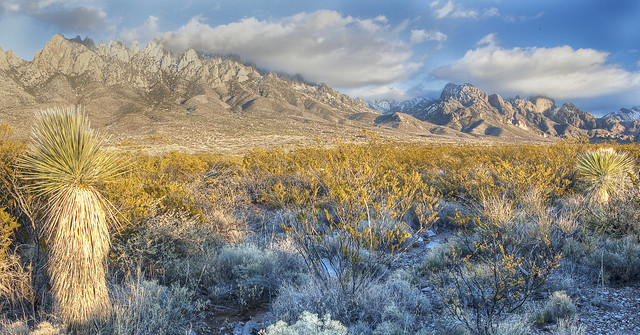
So what are the arguments against the Antiquities Act and the monuments?
Last fall, before the election, H. Sterling Burnett wrote a piece for Forbes railing against the Antiquities Act, Obama's Dangerous Use Of The National Monument Law. He feels that the law "is one of the most ill-considered laws ever written" and that it give the President unconstitutional, "dictatorial" powers.
Now, from a libertarian point of view, this fear can be seen as somewhat valid if the act was ever misused. Burnett screams that it gives the President the power to federalize property, taking it away from private landowners, though in practice this has rarely, if ever, happened. For the most part, and especially with the 27 monuments under review, the land was already controlled by the federal government, largely through the Bureau of Land Management (BLM) or the Forest Service (USFS), or it was donated, in the case of Katahdin Woods and Waters in Maine, by a private land owner with the specific intention of the National Park Service taking it over.
Even President Trump has spoken of the creation of these monuments as being a massive federal land grab, but you cannot steal land you already "own" or land that is being freely given over to you.
These arguments are very weak, but they play well to a base that has been living in fear of the federal government for decades. Burnett writes, "Hundreds of millions of acres of private and public land have been placed off-limits and designated as monuments." By leading with the word private instead of public, he makes it sound like the vast majority of the land was private, but in reality, this would be only a few handful of acres of private land, if any at all. The vast majority, if not all, of the land in these 27 monuments, was already in public control.
The monument review process has destroyed many of the arguments against these monuments. They were created without local support? Well, they all have been receiving tremendous local support through this process. Plus, we have learned about monuments, like Bears Ears, where there was a large local movement calling for Congressional protection of the lands, and that the monuments were only created when the partisan gridlock in Congress crushed the process.
They hurt the local economies? All the data coming out through the review process shows that the older monuments on the list of 27 have been tremendous boosters of the local economies. The oldest, and one of the most "hated" of these monuments, Grand Staircase-Escalante, has revitalized one of the most remote regions in the continental U. S. and in Maine, businesses that moved into the vicinity of Katahdin Woods and Waters are panicking until this review process is resolved (though it appears that the recommendation will be to leave that monument as is).
Energy and energy jobs? This is another huge argument, again one really fueling the anti-Grand Staircase-Escalante movement, and one of the stated motivations behind President Trump's Executive Orders on the monuments in the first place. Grand Staircase-Escalante has closed off one of the largest coal deposits in the state of Utah, but are the jobs really there if they open those lands up to mining? The coal industry is not dying from regulation, it is dying from low natural gas prices and the movement away from coal in general. Even if these seams were exploited, would the jobs even go to the locals, or would they be filled by out of work miners from other parts of the country? That would, I suppose, be good for those folks, but it would do little to help the people living next to the monument now.
As for oil? Well, the U. S. has solid oil reserves. Oil we keep in the ground in case we need it later. Oil, for the most part, that is not under national parks and monuments. So, why drill in these monuments now? We are not in a oil crisis. Prices are relatively low, for the moment. And oil in the ground will always be there, it's not going anywhere. If a true national crisis arises and we desperately need the oil under our parks and monuments, well, let's have the debate about drilling when it happens, but until then, let's save it as just another prudent reserve.
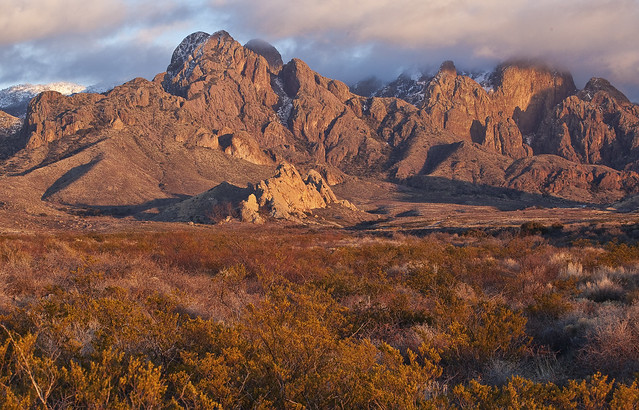
In the western states, many state politicians would like to see much of the federal lands be transferred to the states, especially in Utah and Nevada where, to be honest, a ridiculous amount of the land is controlled by the federal government, but there are a couple of points of interest here. First, a lot of this federal land was put under the administration of the BLM because no one owned it and no one was using it. Really, this won't change much if it transfers to state control. But there are ulterior motives here as well. Utah, in particular, wants the land so they can lease it or sell it to industry. It's about the money, not states' rights.
Of course, there are some valid arguments on both sides of this, but that is also why the monuments are important. Wrangle over this parcel and that parcel, lease this, sell that, state or federal... But let's keep these lands, the existing monuments, set aside and out of that debate.
And then, of course, the size! Some of these 27 monuments are huge! Too big, right? And how can that possibly be the smallest area needed to protect the land that needs protecting? On this, there are a couple arguments. Often, as with the Cascade-Siskiyou National Monument, we are protecting an ecosystem. Those are just big! In other cases, as with Bears Ears and Grand Staircase-Escalante, beyond just protecting a lot of special places that all happen to be really close to each other, we are also protecting what we don't even know is there yet. The fossil beds and ancient archaeological sites in these monuments are still barely known and understood. Maybe some of the land here does not need monument status, but we just aren't sure yet, and it may take generations to know for sure.
Finally, big monuments are not new. All of these arguments were used when the Grand Canyon National Monument was created in 1908. It is too big. It is a federal land grab. What about the resources there? It's just a big hole in the dirt, why is it worth protecting? What about the dams we could build! That should be Congress' decision, not the President's... All of it.
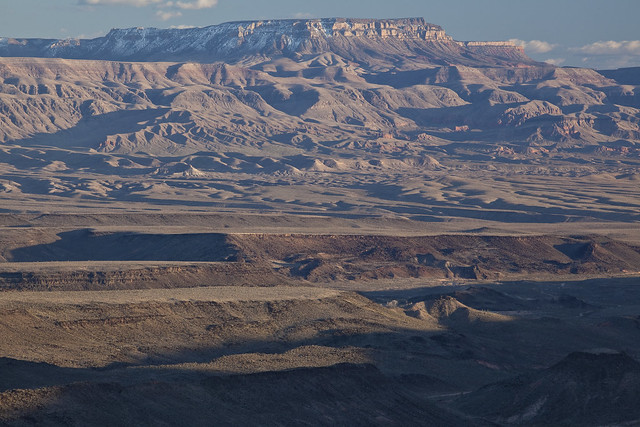
Well, let's take a closer look at that last bit. In 1882, the first bill was introduced in Congress to create a national park. If it had passed, the Grand Canyon would have become America's second national park after Yellowstone. The bill died. So did bills in 1883, 1886, 1910, and 1911. Congress would not elevate Theodore Roosevelt's national monument to park status until 1919.
However, after Senator Benjamin Harrison's first three bills attempting to create Grand Canyon National Park failed, he was elected president. Then in 1893, on his own, he created the Grand Canyon Forest Reserve and, in 1906, President Roosevelt unilaterally created the Grand Canyon Game Preserve before elevating it all to monument status, our 11th national monument, in 1908.
According to the NPS, "The validity of this designation was challenged, but a U.S. Supreme Court decision in 1920 confirmed the power of the president to establish national monuments of any size under the Antiquities Act."
Today, the Grand Canyon is considered to be a natural wonder of the world and one of the crown jewels of the National Park Service, but it took 37 years to get the bill creating the park through Congress.
Let's be clear here, Washington was not completely anti-National Park during this time (as it seems to be now), 13 other parks were created between the first failed bill and the last successful one, but Congress clearly had a hard time, for various reasons, getting behind this one.
Imagine what can happen in 37 years. One of the initial motivations for creating national parks in the first place was to prevent the commercialization that happened at Niagara Falls from happening at other natural wonders. I often refer to the parks as Disneylands, but they are very well managed compared to the commercial circus that Niagara became. I've heard rumors that there is a waterfall in there someplace surrounded by all of the urban development.
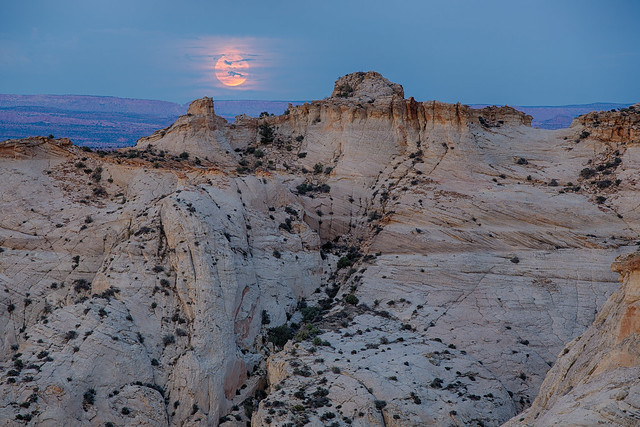
With many of these new monuments, the threat is not unrestrained development for tourism, but industrial use. If we change our mind about Grand Staircase-Escalante in 37 years, will there be anything left of the land after decades of coal mining and resource extraction? And trust me, if this place wasn't so remote, it might already be one of the jewels of the National Park System. It suffers from some of the same plights that delayed the Grand Canyon park for so long... Not enough people actually know what is out there.
In fact, this process happened more than once with Grand Canyon National Park. In 1923, a new Grand Canyon National Monument was created to protect even more of the canyon, and in 1969, on his last day in office, at the peak of dam building fever on the Colorado river, President Lyndon Johnson created Marble Canyon National Monument, protecting the canyon up river from the national park from any future dams. In 1975, the second Grand Canyon National Monument and Marble Canyon National Monument were incorporated into Grand Canyon National Park.
On that same day in 1969, President Johnson also expanded Arches National Monument and Capitol Reef National Monument in Utah. Congress, of course, later elevated both of those monuments to park status. He also decided against the creation of a 911,700 acre Sonoran Desert National Monument in Arizona at that time. The current Sonoran Desert National Monument, one of the 27, is half that size.
This 1975 expansion of the national park, motivated, in part, to stop dam construction, incorporated parts of Kaibab National Forest and Lake Mead National Recreation Area into the park, as well as the entirety of the two national monuments. So, we're on our third Grand Canyon National Monument (Grand Canyon-Parashant) now, and a fourth (Greater Grand Canyon Heritage) is even being suggested... There is a bill in Congress about this now. If history repeats, best get rid of that third one, or the park might grow again, and even more after the fourth.
 |
| Looking upstream into Marble Canyon from the confluence of the Colorado and Little Colorado rivers. Photo: NPS |
These are clearly not all of the issues involving the monuments. I could go on for days about grazing issues, but I won't... Let's just say that it is agricultural welfare, it is a waste of everyone's money no matter how much Ammon Bundy whines, and it is still permitted in monuments in general. But these are are some of the most used arguments against the monuments and the Antiquities Act.
The act is not a despotic tool for liberal presidents who want to be dictators, rather it is a check on the system for when the system fails. Of course, it is a powerful check, and so it is hated, and these emotions are usually directed towards personalities, not towards the issues and the merits of the lands being protected. It's us versus them, not us, all, seeking what is best for the people and the land. Because of this, these debates can get ugly fast, and emotions run very high towards hatred of the opposition.
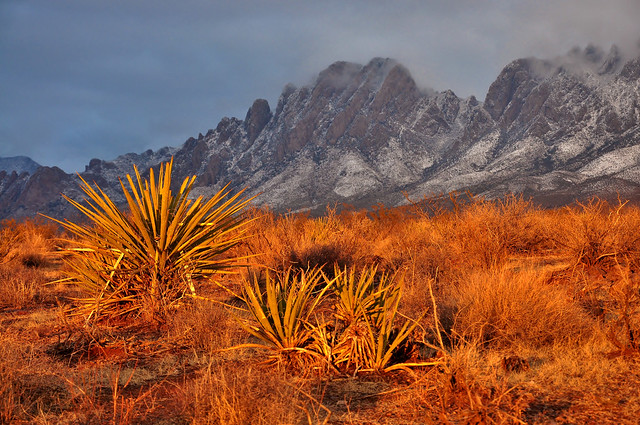
Much of this rancor arises from the hatred of the presidents who have recently used the Antiquities Act to create monuments. Folks like Burnett are not reading the actual Proclamations, are not looking into the arguments for protecting each of these monuments individually, they are just railing against Presidents they feel have misused their office in many different ways. It is really a case of forcing the shoe onto Cinderella's foot... We don't like this president, so let's create some arguments to make this look bad.
In this article, while Burnett does follow up with some arguments that a few Democrats were against the expansion of Papahanaumokuakea Marine National Monument, and that the Western Pacific Regional Fishery Management Council was against the expansion, he leads off with arguments against Papahanaumokuakea, President Obama, and the Antiquities Act that are based only in conservative, emotional politics and have nothing to do with any facts at all.
Burnett seems to give his predecessors something of a pass on their use of the act, but he unleashes on President Obama with both barrels. He writes, "Obama’s monument declarations in Hawaii and beyond are not motivated by a desire to protect lands threatened with imminent destruction; it is about building his legacy with far-Left environmental zealots." Vanity and the desire to placate small special interest groups, he claims, were the driving motivations behind the expansion or creation of 25 monuments during the Obama presidency.
In this way, many people do not see the current administration's actions as being against the land, but merely as undoing the legacy of President Trump's much hated predecessor. They want to hurt him and his ego, and the land is just a means to an end.
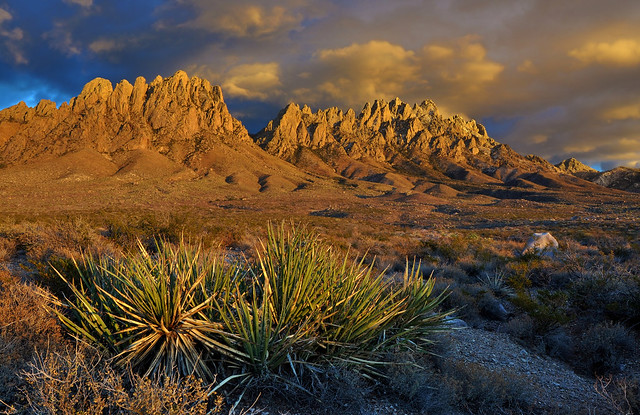
Of course, as I wrote, if you look at each monument as an individual issue, and not through some all-encompassing lens of anti-Obama or anti-Democrat venom, each monument has very valid arguments for its expansion or creation. To understand the Marine National Monuments, take a look at this National Geographic article from February 2017, Why It’s Important to Save Our Seas’ Pristine Places. The same issue also contains a short piece covering President Obama's actual motivations behind his expansion and creation of Marine National Monuments and his use of the Antiquities Act in general, Where Obama’s Deep Love for the Ocean Comes From.
From reading the latter article and/or watching the video above, it becomes clear that President Obama gets it. He sees the issue of the monuments as being larger than all of us, and any single person, party or administration. Larger, even, than our generation. He does see legacy, but not for himself, instead for all of us, for our future and for the quality of life of our future generations. Plus, he just, in his heart, like so many of us, understands how special these places truly are.
The people who support eliminating the monuments are, by far, not in the majority, but they are a key part of President Trump's core support demographic. Many are small government folks who want to see no federal management of any lands, some even to the point where eliminating or completely privatizing our national parks sounds like a good idea. They buy into all of the arguments against conservation and protection, and see these lands as nothing but a resource to be exploited for profit. They are entrenched in these ideas, shored up with rhetorical arguments about conservative political and economic myths that often have little to do with actual facts, and nothing will convince them otherwise.
Other folks who support the monument review, while sharing the general political views of the people mentioned above, may actually agree with protecting the monuments if they had the full set of facts, but life is busy, they hear a few details spun to the far right by sources they trust, perhaps having these few details doubled down on by a mistrust of the federal government and a dislike of the Democratic presidents who created the monuments, and they just roll with it since losing the monuments will not effect them at all (except for pissing off all of the "snowflakes" who like them).
These folks would probably support keeping the monuments if they saw all of the economic data supporting them, learned a bit about what the monuments were actually protecting, and understood, truthfully, the actual land uses allowed within the monuments, not the untruths, half truths and fears spread around by the monuments' opponents.

There are also folks who just don't get it, period. Maybe they've never been to anyplace so spectacular that the sheer beauty and amazement of the sights made it hard for them to even breathe, or maybe they just aren't wired to appreciate such sights? They truly just can't understand.
Decades ago, one politician - Floyd Dominy, Commissioner of Bureau of Reclamation from 1959 to 1969, I believe - actually suggested that we should just send out a bunch of photographers and filmmakers to the national parks and monuments to document what was there for history and then eliminate them, extracting all the resources we can out of them. Dam up Yosemite Valley and the the rest of the Grand Canyon! This is someone who just doesn't get it. Though a modern Works Progress Administration style project like that sounds awesome - I'm in, sign me up! - let's keep the parks and monuments after we're done filming them!
It would be easy to dismiss this as just coarse thoughts and ethics born of different times, but believe me, there are still many people today who share this disregard for nature. They just are quieter about it these days, and they complain about the liberal P.C. thought control police who don't let anyone speak their minds.
It's like this... While most people have at least some appreciation of music, there are a few people who just don't. In some ways, my father was kind of like that. He liked music with lyrics that told a story, but would usually choose talk radio over music in the car and I never got a sense that the music itself ever stirred anything in his soul. Some people are just like that, and some people are like that with nature, too.
My youngest son is like this with much of nature, though he had the misfortune of being born into a family that was exactly the opposite. He's an indoor kid who never got into hiking, camping, or even sightseeing, no matter how hard the rest of the family tried...

This different wiring of his became really clear to me a few years ago while we were traveling through Custer State Park in the Black Hills of South Dakota. He was unphased and restless while we drove the Needles Highway, more nervous about the drop-offs and barely noticing the spectacular scenery, which was usual, he is a high strung kid with some anxiety issues, but the "condition" truly revealed itself at the end of the drive. We came around a corner to see Sylvan Lake glowing in the sunset, one of the more spectacular sights we'd seen on a truly spectacular trip so far, and the rest of us gasped and started babbling incoherently about how amazing it was.
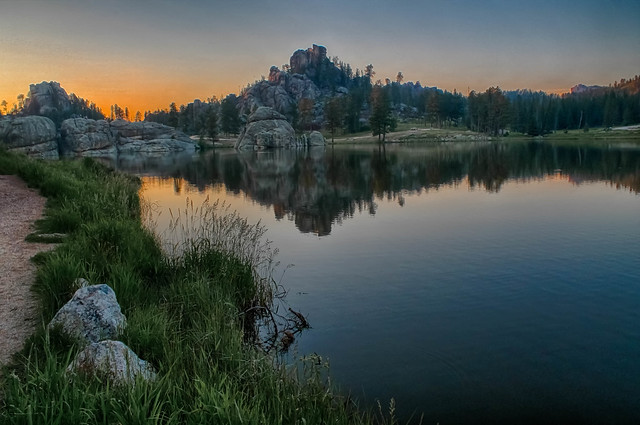
My youngest however just glanced and went back to his video game. After our reactions settled down, he asked us what the big deal was, it's just a lake and we'd seen a lot of lakes on this trip. He truly didn't understand what we found so beautiful about this lake in that sunset light. "I just don't get it," I remember him saying.
For the first time I fully understood that he really didn't get why the rest of the family loved these sorts of places and these sorts of vacations so much. To him, it was just the pure hell of long hours in a van and weeks sleeping in tents. He really didn't understand what the rest of us were getting out of these trips.
Clearly, though, not everyone lacking this wiring to appreciate the land is against the parks and monuments. Some will appreciate them for the science, for the history, for the economics... Some may not be phased by the land, but will fight for the critters living on the land (my son is like this, not a fan of mountains or sunsets, but he loves animals). Some will even defend them purely for the joy they bring to others.
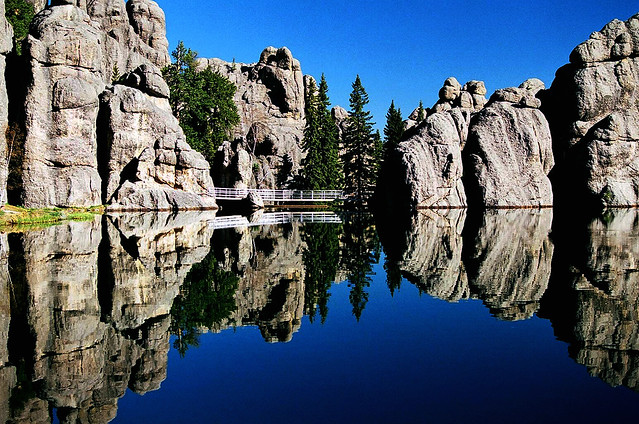
I suppose my point with this anecdote is this... Most of us who are rallying to this cause cannot imagine why anyone would want to eliminate these monuments, why anyone would be against the national parks... We can search through motives of greed, perhaps, or fear of the government, or just pure hatred of previous presidents to find some understanding of our opponents' points of view, but I think, for most of us, it is really hard to wrap our heads around the idea that the parks and monuments are not a good thing and that the Antiquities Act is, rather than one of the greatest laws ever, one of worst ever.
But some folks, really, just can't understand why we are so adamant in our support. We're not all tree huggers or socialists. We're not all vegans or hippies. We're just normal people who's souls are nourished by these places. Of course, all of those types do exist within our ranks, but so do hunters, fishers, loggers, miners, ranchers, farmers... Folks who enjoy recreational opportunities on these lands and folks who make a living off of these lands. Looking at the current assaults on our parks and monuments, we find one of the only issues this year that shares support from the majority of both parties... very few actually feel that eliminating monuments or changing the regulations of our national parks is a good idea.
Even among the ranks of those who support the reduction or elimination of the 27 monuments, the majority still agrees that most of these lands deserve some sort of protection and regulation. Their arguments in favor of the review are based more on the politics of how the monuments were created rather than a desire to see any real harm come to the lands being protected by them.
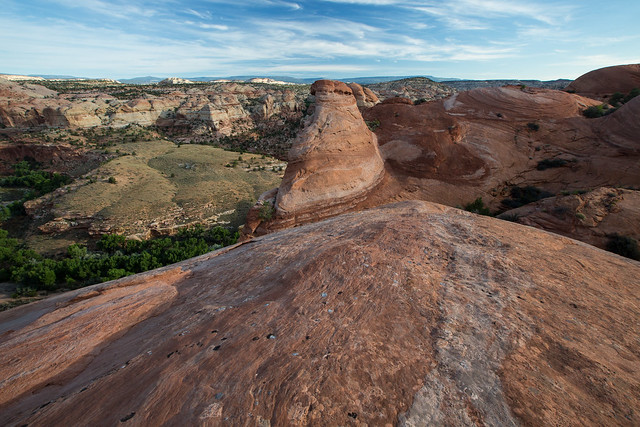
Now don't get me wrong, I think that eliminating or significantly reducing the size of any of the monuments is a terrible idea, but if it happens, because of the folks like the ones I mention above, and because of the great job the agencies are doing managing these lands, it is not the end of the world.
In places like Grand Staircase-Escalante, in most of the places within the monument the BLM will continue to manage the land much as they do now, little will change except for a change in the signs. The same with Bears Ears, I was there several months before the monument designation, and I am sure that all that really changed with the creation of the monument in the places I visited was probably just the some simple signage. The BLM is doing a great job managing their land.
What I fear, more than the reduction or elimination of these 27 monuments, is that these sorts of changes will kick the door open to further reductions and eliminations, which may extend all the way to the National Park Service lands, which are essentially are escaping unscathed (aside from Katahdin) at this point. I fear, even more, that straight up elimination of parks and monuments is not really what will ruin these places, but that our lands are in danger from the quieter, more subtle threats of budget cuts, deregulation, and privatization.
 |
| Hetch Hetchy Valley, early 1900s, from the southwestern end, showing the Tuolumne River flowing through the lower portion of the valley prior to damming. Public Domain https://commons.wikimedia.org/wiki/File%3AHetch_Hetchy_Valley.jpg |
Everyone will scream if the Trump Administration tries to eliminate Yellowstone National Park or Grand Canyon National Park, but they will let these 27 go with barely any notice. Most people have never even heard of these places, even fewer have ever visited them, and all but one are outside of the National Park Service system. Hands off Yellowstone, of course, we're not monsters! But who cares about Ironwood Forest or Upper Missouri River Breaks?
On the other hand, how many will notice if the Park Service is gutted to the point, and the protections are stripped to the point, that the nature of our parks is fundamentally changed? People might not notice when the laws and policies are being changed, but they'll sure notice when they visit. Clear cuts around Yellowstone Lake and no longer being able to tour the springs and geysers of because there is no money to maintain the walkways? That would get folk's attention. Privately owned and operated trams in and out of the Grand Canyon? Hard not to notice that. Oil wells and mining inside of the parks... Hunting (which I am not against in principle, just not in the parks)... A dam in Yosemite Valley, just like Hetch Hetchy, just as Commissioner Dominy dreamed of back in the 1960s? Southern California is thirsty!
 |
| Hetch Hetchy, Taken From Near the Dam Photo: Andrew Thompson, May 24, 2005 Public Domain https://commons.wikimedia.org/wiki/File%3ABeautifulHetchHetchy.jpg |
These Executive Orders, really, I fear, are nothing more than a quick test of the waters to see what the President can get away with. If we aren't careful and vigilant, in a few years Zion National Park will probably still be there, but there may be a two golf course Trump resort filling the entirety of Zion Canyon...
This is the future we are resisting.
Organ Mountains-Desert Peaks National Monument
2014
496,330 acres
BLM
27 Monuments Stop #2 (June 19, 2017)
http://rubble.blogspot.com/2017/06/organ-mountains-desert-peaks-national.html
Current Map (June 2017):
https://drive.google.com/file/d/0B5qJHnJC9HuAcGc5SWhPMURuUW8/view
To comment on the marine monument and sanctuary review process
(Due August 14, 2017):
https://www.regulations.gov/document?D=NOAA-NOS-2017-0066-0001
(Due August 14, 2017):
Links
Forbes: Obama's Dangerous Use Of The National Monument Law (October 12, 2016)
https://www.forbes.com/sites/realspin/2016/10/12/obamas-dangerous-use-of-the-national-monument-law/#233516a44122
National Geographic
Why It’s Important to Save Our Seas’ Pristine Places (February 2017)
http://www.nationalgeographic.com/magazine/2017/02/saving-our-seas-president-obama-oceans-conservation
Where Obama’s Deep Love for the Ocean Comes From (February 2017)
http://www.nationalgeographic.com/magazine/2017/02/interview-president-obama-underwater-snorkeling
Marble Canyon National Monument
https://www.nationalparkstraveler.org/2009/01/pruning-parks-whatever-became-marble-canyon-national-monument-1969-19753395
Greater Grand Canyon Heritage National Monument
 |
| CLICK ON IMAGE TO ENLARGE |
H. R. 360:
https://www.congress.gov/bill/115th-congress/house-bill/360
https://www.facebook.com/GrandCanyonWatershedNationalMonument
President Obama Should Proclaim the Greater Grand Canyon Heritage National Monument
https://voices.nationalgeographic.org/2016/08/15/president-obama-should-proclaim-the-greater-grand-canyon-heritage-national-monument
GreaterGrandCanyon.org
http://www.greatergrandcanyon.org
Ford Library: 1973 Grand Canyon National Park Expansion Documents
https://www.fordlibrarymuseum.gov/library/document/0055/1668930.pdf
NPS Monuments List
https://www.nps.gov/archeology/sites/antiquities/monumentslist.htm
Popular Science / Fox News: What are national monuments and why is Trump reviewing them? (April 27, 2017)
http://www.foxnews.com/science/2017/04/27/what-are-national-monuments-and-why-is-trump-reviewing-them.html
Las Cruces Sun-News: Organ Mountains-Desert Peaks supporters, critics await Zinke recommendation (July 28, 2017)
http://www.lcsun-news.com/story/news/local/2017/07/29/organ-mountains-desert-peaks-supporters-critics-await-zinke-recommendation/521634001
Organ Mountains-Desert Peaks NM - BLM:
Website
https://www.blm.gov/nlcs_web/sites/nm/st/en/prog/NLCS/OMDP_NM.html
Map
https://www.blm.gov/nlcs_web/sites/style/medialib/blm/nm/programs/nlcs/organ_mountains-desert/maps.Par.49542.File.dat/NM_OrganMountainsDesertPeaks_NM.pdf
flickr
https://www.flickr.com/photos/mypubliclands/sets/72157644369932549
organmountains.org
https://www.organmountains.org/
Organ Mountains-Desert Peaks NM - Wikipedia:
https://en.wikipedia.org/wiki/Organ_Mountains-Desert_Peaks_National_Monument
Wilderness.org:
It’s official: New Mexico's Organ Mountains-Desert Peaks is our newest national monument
http://wilderness.org/it%E2%80%99s-official-new-mexicos-organ-mountains-desert-peaks-our-newest-national-monument

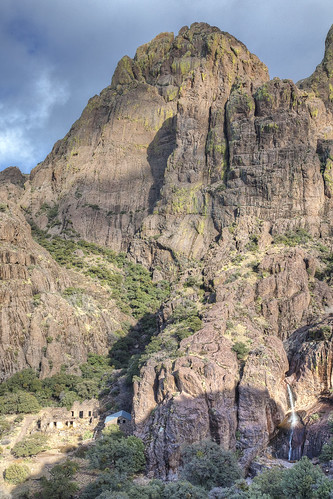
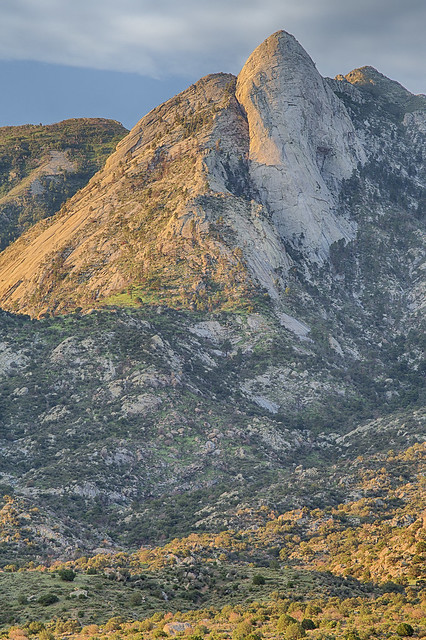
No comments:
Post a Comment